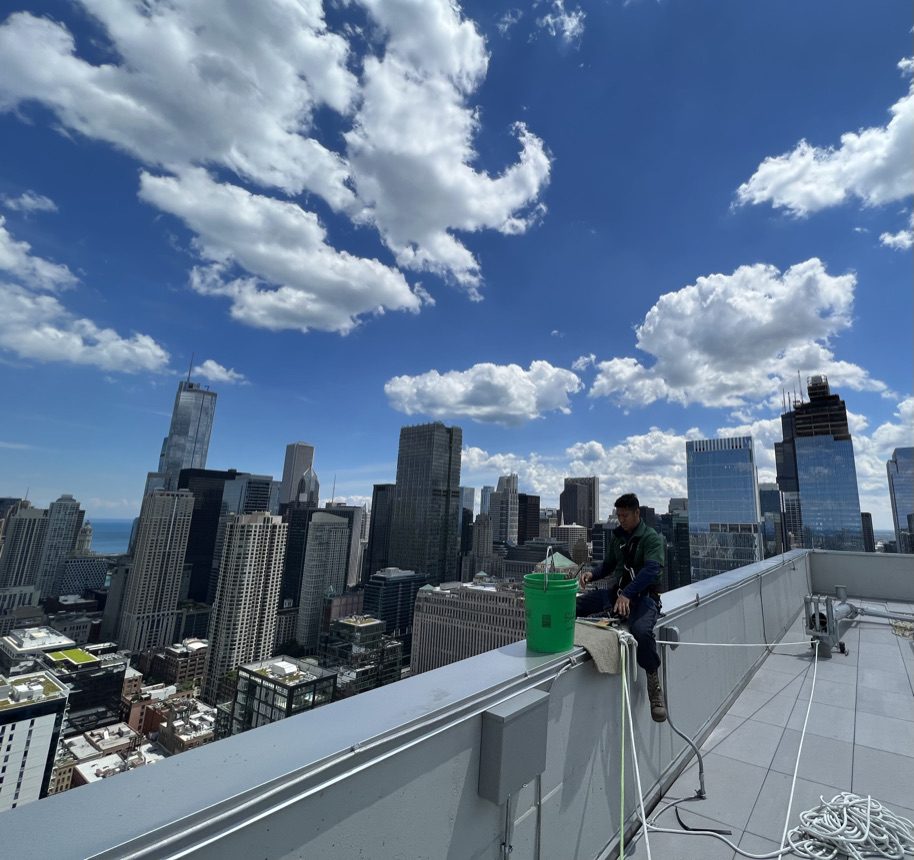A Skyline That Tells A Story: The History of Architecture in Chicago
Contents
- 1 A Skyline That Tells A Story: The History of Architecture in Chicago
- 2 Reaching for the Clouds: The Best High-Rise Buildings in Chicago
- 3 Frequently Asked Questions
- 3.1 Who was Fazlur Rahman Khan and what was his contribution to Chicago’s architecture?
- 3.2 Are there any older buildings in Chicago that are still considered architectural marvels?
- 3.3 How did the Great Chicago Fire impact the architecture of the city?
- 3.4 Are there any guided tours or events in Chicago that focus on the city’s architecture?
Chicago is often hailed as the birthplace of the skyscraper. The Great Chicago Fire of 1871 leveled much of the city, providing a blank canvas for architects with grand visions. The need to rebuild and a boom in the economy led to a surge in construction, and by the 1880s, the race to the sky was on! Famed architects like Louis Sullivan and his protégé, Frank Lloyd Wright, emerged as giants in the field, revolutionizing urban architecture with new designs and engineering techniques. Fast forward to today, and the Chicago skyline is a majestic panorama of architectural marvels.
Reaching for the Clouds: The Best High-Rise Buildings in Chicago
Chicago is home to some of the most iconic and innovative high-rise buildings in the world. Each one is a testament to human ingenuity and the relentless pursuit of excellence. Here are some of the best high-rise buildings that grace the Windy City’s skyline:
Willis Tower
An iconic symbol of Chicago, the Willis Tower, formerly known as the Sears Tower, stands tall at 1,450 feet and 110 stories. Designed by Bruce Graham and structural engineer Fazlur Rahman Khan of Skidmore, Owings & Merrill, it held the title of the world’s tallest building for 25 years. The Skydeck on the 103rd floor offers breathtaking views of the city.
Aqua Building
An architectural marvel designed by Jeanne Gang of Studio Gang Architects, the Aqua Building is a spectacle with its undulating balconies that mimic the flow of water. Standing at 859 feet and 82 stories, it is not just a residential building but a piece of art that adds a touch of elegance to the Chicago skyline.
John Hancock Building
Officially known as 875 North Michigan Avenue, the John Hancock Building is one of the most recognized landmarks in Chicago. Designed by Bruce Graham and structural engineer Fazlur Rahman Khan of Skidmore, Owings & Merrill, it stands at 1,128 feet and 100 floors. The 360 Chicago observation deck on the 94th floor offers panoramic views of the city and Lake Michigan.
NEMA Chicago
A relatively new addition to the Chicago skyline, NEMA Chicago, designed by Rafael Viñoly, is the city’s tallest rental residence. With a height of 896 feet and 76 floors, it offers a blend of luxury and comfort with state-of-the-art amenities and spectacular views of Grant Park, Lake Michigan, and the city skyline.
OneEleven
Located at 111 West Wacker Drive, OneEleven is a luxurious residential tower that stands at 630 feet and 60 floors. Designed by Handel Architects and redeveloped by Related Midwest, it features sleek, modern interiors and floor-to-ceiling windows that offer stunning views of the Chicago River and the city.
55 East Erie
Designed by Fujikawa Johnson & Associates and Searl & Associates Architects, 55 East Erie is one of the tallest all-residential buildings in the United States. Standing at 647 feet and 56 floors, it offers a mix of luxury condominiums and penthouses with sweeping views of the city and Lake Michigan.
Chicago, with its rich architectural heritage and innovative designs, is undoubtedly a haven for architecture enthusiasts. Each high-rise building tells a story of human aspiration and the constant quest to reach new heights. Next time you’re in the Windy City, make sure to look up and admire these architectural wonders that define the Chicago skyline.
Frequently Asked Questions
Who was Fazlur Rahman Khan and what was his contribution to Chicago’s architecture?
Fazlur Rahman Khan was a Bangladeshi-American structural engineer and architect who made significant contributions to the architecture of Chicago. He is considered the “father of tubular designs” for high-rises and was a pioneer in computer-aided design. Khan collaborated with architects like Bruce Graham and played a crucial role in designing iconic buildings such as the Willis Tower (formerly Sears Tower) and the John Hancock Building.
Are there any older buildings in Chicago that are still considered architectural marvels?
Yes, Chicago boasts several historic buildings that continue to captivate with their architectural beauty. Some notable examples include the Chicago Board of Trade Building, the Rookery Building, and the Monadnock Building.
How did the Great Chicago Fire impact the architecture of the city?
The Great Chicago Fire of 1871 destroyed much of the city and presented architects with an opportunity to rebuild. This led to a surge in construction and the birth of the skyscraper, as architects sought to create innovative and fire-resistant buildings.
Are there any guided tours or events in Chicago that focus on the city’s architecture?
Yes, Chicago offers various architecture-focused tours and events. The Chicago Architecture Foundation offers boat tours, walking tours, and even virtual tours that explore the city’s architectural history. Additionally, the annual Open House Chicago event allows visitors to explore numerous buildings not usually accessible to the public.


